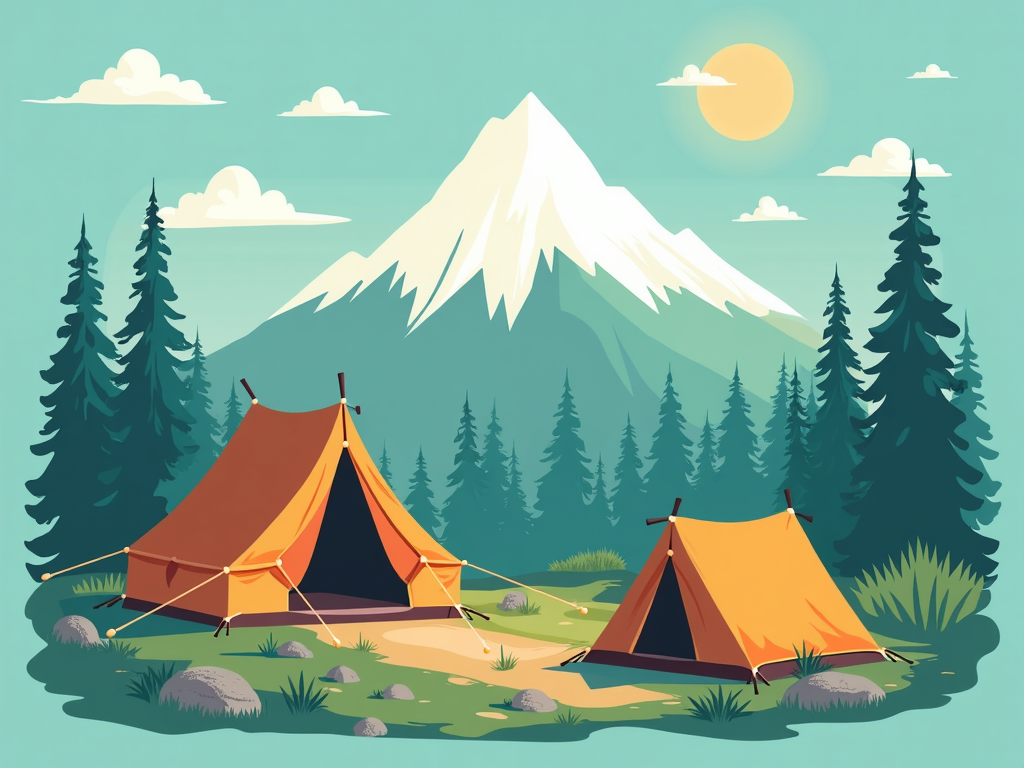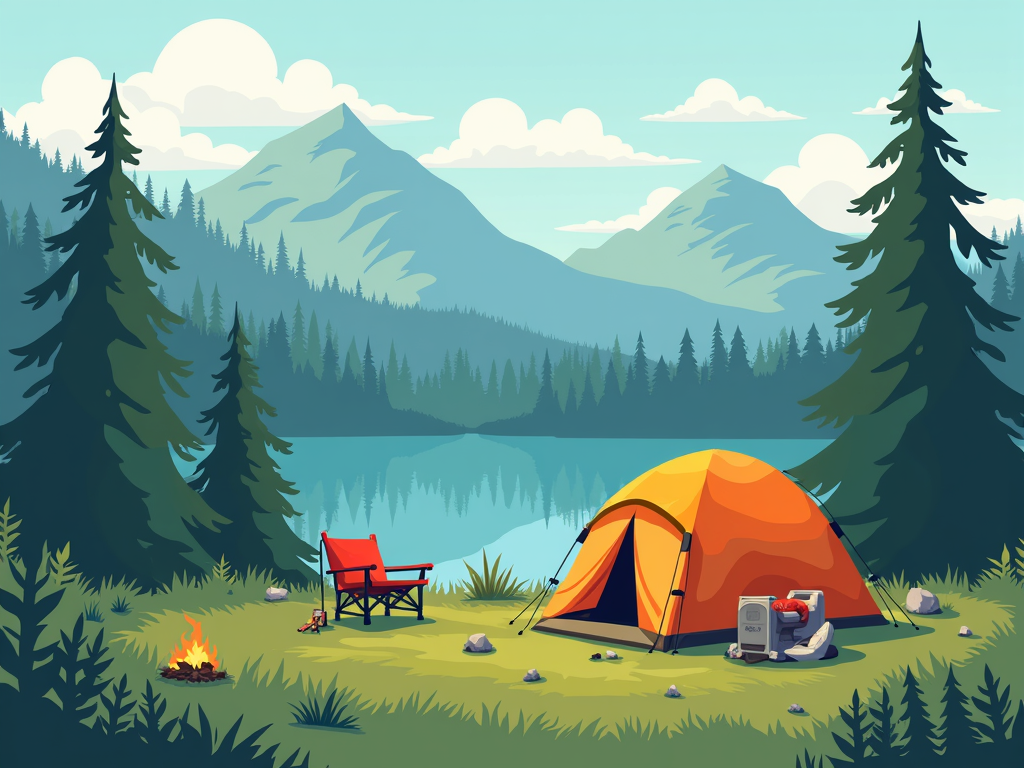Let me guess. You’ve been trying to book that perfect campsite at Yosemite for your summer camping trip, and every single spot is taken. Again.
You’re not alone—nearly half of all campers can’t find available sites anymore. That’s not an exaggeration. The numbers are brutal: booking difficulty shot up from 10.6% in 2019 to a staggering 58.4% by 2022. We’re talking about a 330% increase in just five years.

Meanwhile, camping gear companies keep pushing their latest $500 tents and titanium sporks like that’s your biggest problem.
Here’s the thing nobody wants to admit: having the perfect Coleman cooler or REI sleeping bag means jack when you can’t even secure a patch of dirt to sleep on. The entire camping industry has exploded—demand is up 500% since 2019—but everyone’s still acting like it’s 1995 and you can just roll up to any national park on a Friday afternoon.
Those days are dead. Stone cold dead.
But here’s what the camping elite don’t want you to know: they’re not struggling to find sites. They’re using booking strategies, timing windows, and platforms you’ve probably never heard of.
And I’m about to spill all of it.
Why Finding a Campsite Has Become Nearly Impossible (And It’s Not Just About Popularity)
The campsite crisis isn’t just about more people wanting to commune with nature. It’s a perfect storm of outdated systems, digital scalpers, and supply that hasn’t budged while demand went through the roof.
First, let’s talk about those booking systems. Most national parks still use Recreation.gov, a platform that feels like it was coded during the Clinton administration. It crashes during peak booking times. It doesn’t handle waitlists properly. And here’s the kicker—it’s vulnerable to bots.
Yeah, bots. The same jerks ruining concert tickets have moved into camping.
They scoop up prime camping sites the second they open, then resell them on secondary markets. The National Park Service knows about it. They just haven’t done much to stop it.
Then there’s the supply problem. Despite camping interest exploding, the number of campsites at popular destinations has barely increased. Yellowstone National Park has roughly the same number of sites it had 20 years ago. Meanwhile, Instagram turned every scenic spot into a bucket list destination. Places that used to be local secrets now have three-year waiting lists.

But here’s what really grinds my gears: the camping industry acts like this isn’t happening. REI will happily sell you a $400 tent. Patagonia will outfit you in technical fabrics that cost more than a car payment. Yet nobody talks about the fact that you might never actually use any of this camping equipment because you can’t book a damn site.
The truth is, we’re dealing with 21st-century demand on 20th-century infrastructure. And until that changes, knowing how to work the system isn’t optional—it’s survival.
So if the traditional booking methods are broken, what are successful campers doing differently?
The Hidden Booking Windows and Secret Platforms Professional Campers Actually Use
Here’s where things get interesting. While you’re refreshing Recreation.gov like a maniac, seasoned campers are playing a completely different game.
They know about the golden windows—14 days and 48 hours before arrival. That’s when most cancellations hit. People’s plans fall through, weather looks sketchy, or they just chicken out. Boom. Prime sites open up.
But you need to be ready.
Apps like Campnab and YesYouCamp send instant alerts when cancellations happen. Set them up six months out, not two weeks before your camping trip. This is one of those camping tips that separates the pros from the weekend warriors.
The pros also ditched Recreation.gov as their only option years ago. Hipcamp opened up private land camping—we’re talking 3x more availability than traditional sites. Harvest Hosts connects you with farms and wineries that let you camp for free. KOA Campgrounds might seem basic, but their rewards program gives members priority booking access that actually works.
Then there’s the backup site strategy. Sounds shady? It’s not.
Book ‘shoulder sites’ at less popular nearby locations when you make your main reservation. If you score your dream spot later, cancel the backup. Most places have reasonable cancellation policies. It’s playing the odds, and the odds are garbage if you don’t.
State park systems are criminally underused. Each state has its own booking platform, and they’re usually way less crowded than national parks. Ohio’s state parks are gorgeous. So are Pennsylvania’s. But everyone’s fixated on Yosemite National Park like it’s the only place trees exist.
The Real Secret: Timing Your Bookings
The real secret? Timing. Book popular summer spots in January. Fall camping? Start in May. And for the love of all that’s holy, avoid booking anything for the first nice weekend of spring. That’s amateur hour, and you’ll be competing with every cooped-up office worker in a 500-mile radius.
But what if you’re tired of fighting for traditional campsites altogether?
Beyond Traditional Sites: The New Camping Landscape Nobody’s Talking About
Plot twist: the best camping experiences might not be at traditional campgrounds anymore. While everyone’s fighting over the same 200 sites at popular national parks, an entirely different camping world has emerged.
And it’s kind of amazing.
Remember when tent camping meant a fire ring, maybe a sketchy bathroom? Those days are evolving fast. Campspot’s data shows 72% of campers say nostalgia will shape their 2025 travel plans. But here’s the thing—they’re not looking for actual 1970s camping. They want the feeling with modern perks.
Enter themed camping experiences. We’re talking culinary-focused sites where actual chefs teach outdoor cooking. Astronomy camps with observatory-grade telescopes. Music festival campgrounds that operate year-round. These aren’t your dad’s campgrounds, and that’s exactly the point.
Private landowners figured out what big parks couldn’t: people will pay more for unique experiences with actual availability.
Glamping used to be a joke. Now it’s a $2.35 billion industry. And before you roll your eyes, consider this: luxury camping sites have 5x better availability than traditional campgrounds. You can actually book them. Wild concept, right?
The shift isn’t just about comfort. It’s about access.
Hipcamp alone added 3 million acres of camping options. That’s more than Yellowstone, Yosemite, and the Grand Canyon combined. These sites offer experiences you can’t get in national parks—camping in vineyards, staying on working farms, or setting up next to private lakes.
Big Brands Are Catching On
Even big brands are catching on. KOA went from basic RV parks to offering ‘glamping villages’ and themed weekend experiences. Their occupancy rates are through the roof while traditional sites struggle with overcrowding and underfunding.
Brands like Big Agnes, MSR, and Osprey are partnering with these alternative sites to create gear-specific experiences. Want to test that new camping backpack or camping sleeping bag before buying? There’s probably a site for that.
The message is clear: adapt or keep fighting for scraps.
So now that you know where to look and when to book, let’s put it all together.
Your New Camping Reality (And How to Win at It)
Look, I get it. Part of camping’s appeal was its simplicity. Pack your camping essentials, find a spot, disconnect. But that fantasy died when Instagram discovered the outdoors and everyone decided they needed their own personal Ansel Adams moment.
The camping world split into two groups: those who adapted and those still refreshing Recreation.gov at 3 AM.
The good news? You just joined the first group. You now know what 90% of campers don’t. The golden booking windows. The alternative platforms with actual availability. The private land revolution that’s changing everything.
Will you get that exact site at Yosemite on the Fourth of July weekend? Probably not. But you will go camping. You’ll have incredible experiences. And you’ll do it without the stress of competing with bots and crowds.
Your Essential Camping Checklist for Success
Forget the typical camping checklist of camping stoves and camping lanterns. Here’s what actually matters:
- Set up Campnab alerts for your target destinations
- Create accounts on Hipcamp, Harvest Hosts, and KOA
- Mark your calendar for booking windows (6 months out for summer, 4 months for fall)
- Research state parks within 2 hours of your target destination
- Accept that camping accessories matter less than actually having a place to camp
The camping dream isn’t dead. It just looks different now. Time to stop fighting the old system and start using the new one.
Your first move? Set up those Campnab alerts today. Not tomorrow. Today. Because while everyone else is complaining about campsite availability, you’ll be too busy actually camping to care.
And remember—Leave No Trace principles apply whether you’re at a national park or someone’s backyard. The camping community depends on all of us doing our part, no matter where we pitch our tent.
Now go book something. Anything. Just get out there.